I’m a sucker for a year-end list. I love seeing what people enjoyed, adding to my TBR, and discovering new titles and authors. However, I also suffer from a very particular, what-some-have-deemed-“weird” taste. Given this affliction, I wanted to create a list of suggestions from authors who share my penchant for more experimental or innovative literature. Below are books that these artists enjoyed in 2022, titles both old and new. I hope you enjoy and add something new to your own TBR. As my sister and I used to say to each other when we were kids, “Cheers to the weirdos!” —Jesi

Day Counters
by Charles Bennet
(self published)
This is one of my favorite recent books, and one of the first new crime novels that puts me in mind of Elmore Leonard. It starts in Vermont at an AA meeting and unfolds masterfully into the kind of book avid fans of Nico Walker’s Cherry or that Fuccboi book seemed to be talking about. It’s so fantastic and I can’t recommend it enough.

A Light No More
&
The Woman Who Lived Amongst the Cannibals
by Robert Kloss
(Inside the Castle)
Both of these were reissued this year by Inside the Castle, and prior to that had been holy grail books for me as Kloss published a limited number years ago and I’ve fallen in love with his approach via the PDFs he’s shared on his site. It’s my feeling that contemporary books need to figure out ways of balancing the present brain and what literature can do, and Kloss has figured out a method here that’s simultaneously very easy to get lost in and hold one’s attention, while being as artful and avant-garde as anything you’ll come across. The reissues are beautiful and I can’t recommend them enough.

$50,000
by Andrew Weatherhead
(Publishing Genius)
Another one that engages the attention span realistically given everything, but sacrifices nothing in terms of ambition and pushing the form forward. I think of this as a contemporary epic poem, composed of short lines, triple-spaced, pulled from life or the internet or some other place. It’s one of the first books I’ve ever read that I don’t think I’ll ever stop reading exactly, not in terms of revisiting it year after year, but keeping a bookmark in the thing and moving right to the beginning when I read the last line.
The Fern Rose Bibliography
by Tan Lin
(Cookie Jar 1)
This was published as part of a set of beautiful handmade books called Cookie Jar 1, via an Arts Writers Grant. PDFs are available online and I was shocked to find that when I put my university affiliation in they sent me the box of these books physically, for free. M Kitchell did a year-long subscription via Solar Luxuriance once and opening these books felt like opening my monthly delivery from that. Tan Lin is, I think, my favorite writer, living or dead, and his recent work has taken an approach to autobiography that feels like an accounting, via different objects and elements of his life. Here he’s looking through family books and remembering his mother and father, and their unique experience of American life. I’ve read it twice now and will revisit soon.

How to Not Write
by Lisa Carver
(self published)
I like this as sort of emblematic of Carver’s overall output as a writer—just in terms of consistency and always pushing things and trying out new forms. The ideas here about writing feel genuinely fresh and loaded with potential, and the writing itself is totally frenetic and cutting.
—Grant Maierhofer is a writer from America

The Removed
by Brandon Hobson
(Ecco)
My favorite read of the year. A spiritual odyssey and a serious contribution to Cherokee literature. Hobson has achieved something great and important here. At one point, the ghosts of Cherokee families on the Trail walk right through the story while the protagonist stands by gasping, and something in me shifted forever.

Easy Beauty
by Chloe Cooper Jones
(Avid Reader Press)
Brave, brave, brave essays that is once a journey-story and a philosophical treatise on beauty and disability. Full of passion, brilliance, humor, grace, and radical love. I feel like I really need to hear what she has to say.

In the Distance
by Hernan Diaz
(Coffee House)
If you haven’t read Diaz’s first novel, you are in for a treat. This immigrant story, this inverted western, this myth is so well-written and different from anything before it, it seems to have been lifted and brought here from another time.

The Factory
by Hiroko Oyamada
(New Directions)
A completely weird office novella that involves a work campus that is as familiar as it is unimaginable. Yet, imagine she does: crazy animals, surreal landscapes, inventive writing, existential terror.

Reports
by Brian Evenson
(The Cupboard Pamphlet Press)
I heard Evenson read from this chapbook during one of those weary pandemic-era online events. I bolted up out of my lonely pandemic slouch and laughed! The entire chapbook is so stunningly good, full of Evensonian crystals. I’m now a Cupboard Pamphlet subscriber.
—Deb Olin Unferth, author of Barn 8

Rouge Street
by Shuang Xuetao, trans. Jeremy Tiang
(Metropolitan Books/Macmillian)
In these three novellas, Xuetao carefully weaves us through the terrain of 艳粉街 (Yanfen Jie or “Rouge Street”)—but like the futures of millions living in Shendang during the reform, the terrains of the stories are swiftly altered. We witness a pastor’s murder, then feel the ice rupture beneath our feet as we sink into the depths of a murky struggle session, are compelled to set fields aflame for childhood lovers, search for our cousin in bar basements and factories and department stores. Like his characters who seek hope in a time when there is none, Shuang Xuetao shows us what writing can do when not eclipsed by fear of the impossible.

Negative Space
by B.R. Yeager
(Apocalypse Party)
Fear is contagious in a small town; even more so when coupled with obsession, love, and hatred within a teenage friend group. As our different cast of narrators share their experiences of infatuation—romantically or not, consciously or not—with their charismatic leader, Tyler, and his usage of the drug WHORL, the recent mysterious suicides happening around town increase at a rapid pace. So what to make of it when we find ourselves connected to the intricate faces of death? Having sold 10,000 copies as of December, Negative Space is one of the few books I’ve read that capture our modern experiences of youth with sometimes uncanny accuracy, and will probably remain on many people’s top lists for years to come.
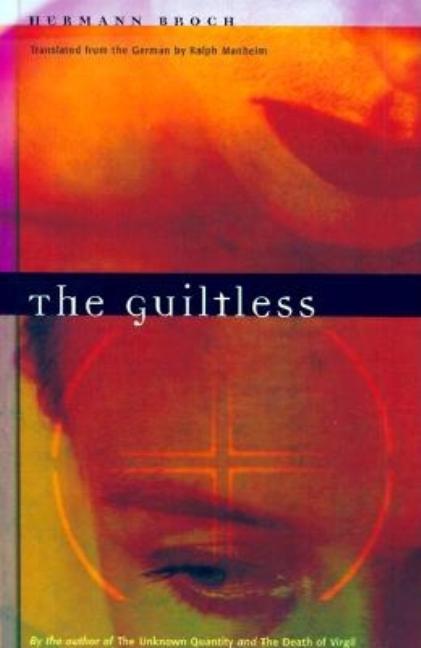
The Guiltless
by Hermann Broch, trans. Ralph Manheim
(Quartet Encounters)
There are many poor reviews of this on Goodreads, my favorite of which is in German and which I am placing here now in Google-translated English: “But that’s not all that has to be criticized in this work, which I would like to casually describe as artificial writing. Analogous to artificial landscaping, which perverts and rejects nature, Broch also deeply distorts human nature. The actions of all characters are explained, although they are psychologically completely incomprehensible and illogical. I definitely took into account the historical moral concepts of past centuries, which I did get coherently explained in the literature of contemporary witnesses. None of the characters from contemporaries like Schnitzler, Roth, Musil etc. behave like that… – well, crazy.” A darkly humorous and absurd collection concerning very guilty people who would prefer to think of themselves as guiltless, following with Broch’s belief that those who helped shape Nazi Germany were none other than the ones who chose political indifference in the face of atrocity. This includes a man who tricks people into watching him get off as his wife beats him with a feather duster.

Rhinoceros & Other Plays
by Eugène Ionesco, trans. Derek Prouse
(Grove Press)
In a quest to write a play this year, first with my friend Mara Iskander (who has still promised to bring this into fruition), and then halfheartedly with writer Joey Grantham (who is still waiting on me to make a Google doc, probably), I decided to read a lot of different plays. I found the Ionesco at Topo Books five months ago or so, and was gifted it again this week by another friend of mine, which meant I had to reread these plays—just as good as they were the first time. Theatre of the Absurd at its finest, with our human fumblings to achieve perfect understandings of ethics, morality, relationships, and our own selves in full, fantastical light.

Dune
by Frank Herbert
(Ace)
I promised my students/myself I’d finally read this book and found a copy for $1 in Iowa a couple months ago, which sat on my shelf until this past week. I ended up finishing the entire trilogy (Dune, Messiah, Children) in the span of four days and will be moving onto the last official Frank Herbert-written sequels after this. I keep laughing randomly to myself throughout the day thinking of thousands of Duncan Idaho’s stacked on top of one another, and also Jason Momoa playing a character named Duncan Idaho.
—Daisuke Shen, co-author of Funeral

In the Lake of the Woods
by Tim O’Brien
(Mariner)
Just read this one, so it’s a late best-of for 2022. An amazing study of guilt, innocence, and the many layers of self-deception and secrecy in between. Shocking on a very profound level—John Wade/Sorcerer is one of the great, haunting American characters.

Solenoid
by Mircea Cartarescu
(Deep Vellum)
Everyone’s talking about this epic Romanian novel, so I won’t add much, except to say it’s probably my favorite book of the past 10 years.

A Strangeness in My Mind
by Orhan Pamuk
(Vintage)
A beautiful elegy for a rapidly changing Istanbul, a city that I spent time in during my 20s and have found to be extremely fruitful as a dream-landscape ever since. Also, a moving ode to the importance of solitude and inner strangeness amidst the loving bustle of urban family life. An old-school social novel of the type I don’t usually read, but this one really moved me.
—David Leo Rice, author of The New House and others

In her translation of The Odyssey, scholar Jane Ellen Harrison points out that “the Gorgon was made out of the terror, not the terror out of the Gorgon.” In Kim Vodicka’s Dear Ted (Really Serious Literature), said philosophy is everywhere. Vodicka’s brilliance as a writer has always been that her writing manages to upstage itself: something wittier (powered by the wit of the previous lines it came from, as is always the case with truly original writers) is always coming in at stage right or left. Dear Ted has a wonderful sense of play, and takes plenty of cigarette/coffee breaks from its own quite significant horror. The dialogue is plastered with song puns, like the Kenny Rogers-cum-Hannibal Lecter “Lookin’ for love in all the wrong organs” and “If I can’t kill you/I don’t want nobody, baby.” Donna Summer’s I Feel Love plays at the Salo like “nuptials” of Sex and Sex Bundy.

Johannes Goransson’s Summer (Tarpaulin Sky Press), a lament for the death of the author’s infant daughter, is beautiful, plaintive, frantic, and gentle, like a lullaby. Punctuated with Swedish phrases that almost seem to be hiding poems in themselves, it attempts to ride its own stream of consciousness into some kind of velocity that will sustain what the author has lost, only to run into inescapability. The landscape is bright, tormented, teeming with flowers and growing things. A new take on April as the cruelest month, and an unforgettable book.
—Lisa A. Flowers, Founder/Editor, Vulgar Marsala Press

A harrowing story of the high price of independence for a woman in the far West, Robin McLean’s Pity the Beast (And Other Stories) blew me away with its moral clarity. Speaking of: Kirstin Allio’s Buddhism for Western Children (University of Iowa Press), may be the most lucid study of the blinding psychology of charisma that I’ve read. In Cold Enough for Snow (New Directions), Jessica Au’s sleek debut, a mother and daughter embark on a fraught trip to Tokyo; Au’s dissection of their relationship, at once distant and entirely too close, is deft, knowing, and, at times, so accurate I cringed. Another Love Discourse (Terra Nova), Edie Meidav’s fourth novel and first foray into autofiction, sets a messy COVID divorce against Roland Barthes’ reflections on intimacy; the result is a deep meditation on loss. Finally, I couldn’t stop thinking about Amy Hoffman’s Dot & Ralfie (University of Wisconsin Press), in which a lesbian couple confronts the losses of age with honesty, courage, and warmth despite the bigotry that surrounds them.
—Diane Josefowicz, author of Ready, Set, Oh
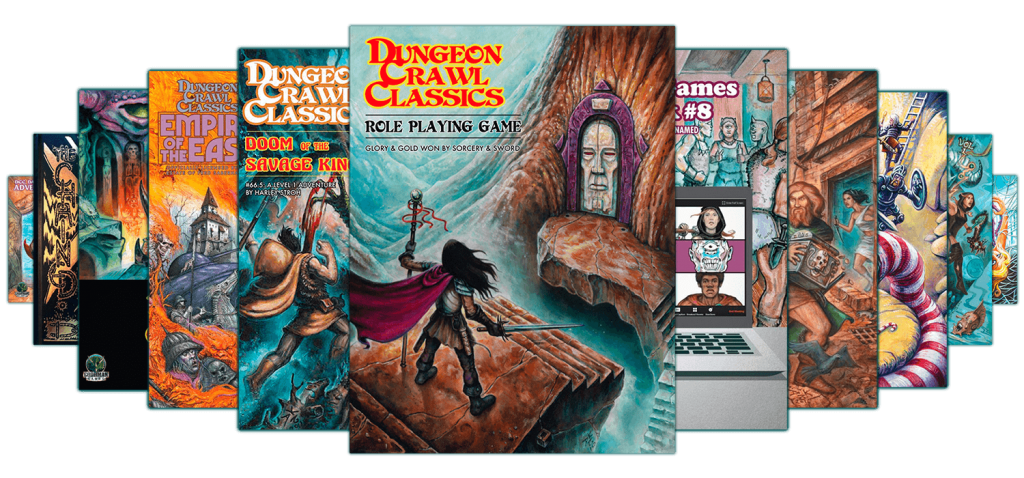
Dungeon Crawl Classics/Mutant Crawl Classics
(RPG)
(Goodman Games)
My entire life, I have been in love with TTRPGs. My dad always had some edition of D&D on-hand, as well as a ton of the supplements. (Monstrous Manual 2e seriously was my jam.) DCC/MCC is basically a modern take on all the great bits of D&D that kind of make it not fun. You remove all the slog and only keep (honestly) what you want to play and think will make your session(s) more fun. This style of play is called OSR (Old School Renaissance AKA Old School Revival) and I am all for it. There are so many modules (i.e. adventures) to discover and there is this great big indie scene of amazing writers with so much talent. I love love LOVE all of it.
DISASTERPIECE
by Dean Blunt
(self published)
A screenplay that is completely center-justified, and it uses random images from the Internet for visual reference. For those who don’t know, Dean Blunt (his entire aura) is more of an art project than anything else. Yes, he is known, primarily, for his music, but he also does things like this screenplay. He also has an opera, titled INNA, that he did with Mica Levi. I seriously don’t know that I will ever become bored with anything Dean creates. All of it is just so … interesting.

2120
by George Wylesol
(Avery Hill Publishing)
Probably one of my favorite right-now-alive visual artists. With this text, Wylesol effectively blends the gamification of the CYOA genre and applies his own aesthetics to the entire thing, in the process creating something I honestly have never seen done quite like this before. He takes these super tiny boxes that represent page numbers and in each individual sequence, you are meant to pick where you go next. It’s hard to explain (because no one else has ever done it like this) but it works so well. It’s a hefty tome, the print quality is excellent … I dunno. I can’t not recommend this to just about everyone I know.

The Longest Summer
by Alexandrine Ogundimu
(CLASH Books)
Full disclaimer: I have read this book and also provided a blurb. I am probably the slowest reader anyone will ever meet. I like to re-read entire pages maybe three or four times before I move on. The great thing about this is, as soon as I am finished with a book, I am able to recall (with amazing accuracy) when and where something happened (for maybe a couple days). I read Alexandrine’s book in ~1.5 days. Maybe the fastest I have ever read something. She continues to impress me with her ability to write interesting characters and unique dialogue. For this one: absolutely do not sleep!

WITCHWOMB/VOIDTHROAT/GRACETONGUE
by Rachel Lilim
(SURFACES.CX)
It’s rare these days to find someone who is able to create work that is both textually and visually interesting—at least for me. Everything Rachel touches, to my eyes, is gold. She also creates interesting GIFs … and music (I don’t know that very many people know that she is also a very talented musician; maybe I am not supposed to say that). She’s one of those, anything-she-releases-I-am-there types, for me. Absolutely solid.
—Mike Kleine, author of Third World Magicks and agbogbloshie

The Unauthorised Biography of Ezra Maas
by Daniel James
(Valley Press)
Journalist Daniel James is trying to write the biography of vanished artist Ezra Maas, but the job turns out to be much more dangerous than he supposed, with The Maas Foundation killing his sources and allies, and his own identity breaking down. This is a detective novel and thriller that is part Pynchon (conspiracy everywhere), part Borges (many labyrinths and doubles), and part Tomasula (innovative page designs and varieties). You won’t find a more beautifully produced book.

Aannex
by Blake Butler
(Apocalypse Party)
The son of Satan has recoded reality into a constantly metamorphosing technohell. The set-up is cool, but even cooler are the constantly metamorphosing languages and page designs. This is probably Butler’s darkest and weirdest book yet, and his best since Scorch Atlas.

The Jade Cabinet
by Rikki Ducornet
(Dalkey Archive)
Memory tells the story of her speechless, beautiful, and fairly luckless sister Etheria. All the best of Ducornet is here: voluptuous prose, world travel, fantastic action, and schmucks who try to control everything. I am not sure I want to know the sort of reader uninterested in a novel in which pyramids are collapsed and mummies are turned into fertilizer for profit.

Worsted
by Garielle Lutz
(SF/LD Books)
My favorite story collection of 2021 is also my favorite story collection of 2022. Lutz’s prose chops are on display from start to finish, illustrating both the sad and comic derangements of everyday life. “Rules for Tenants” and “Written at Work” are two of Lutz’s all-time great stories.

Counternarratives
by John Keene
(New Directions)
After winning the National Book Award this year, Keene is more famous for his poetry than his fiction, but I’m using this little space to tell you this collection is one of the finest of the century thus far. The stories describe the experiences of black people from the 1600s to now in the western hemisphere in luscious sentences and a wide variety of forms. “Gloss, or the Strange History of Our Lady of the Sorrows” is the best fiction of any sort I’ve ever read about Haiti—its magic is A+.
—Marcus Pactor, author of Begat Who Begat Who Begat and Vs. Death Noises

Elegy for an Appetite
by Shaina Loew-Banayan
(PANK)
Loew-Banayan’s poetic memoir of becoming a chef & the dynamics of foodways and eating disorders, and our relationships to our changing bodies and identities first and foremost. This book dives deep into paradoxes of professional kitchen culture, but also toward a healing of self in the process of liberation. Elegy for an Appetite will be a book I will assign in college foodways courses in the future, for 2023.
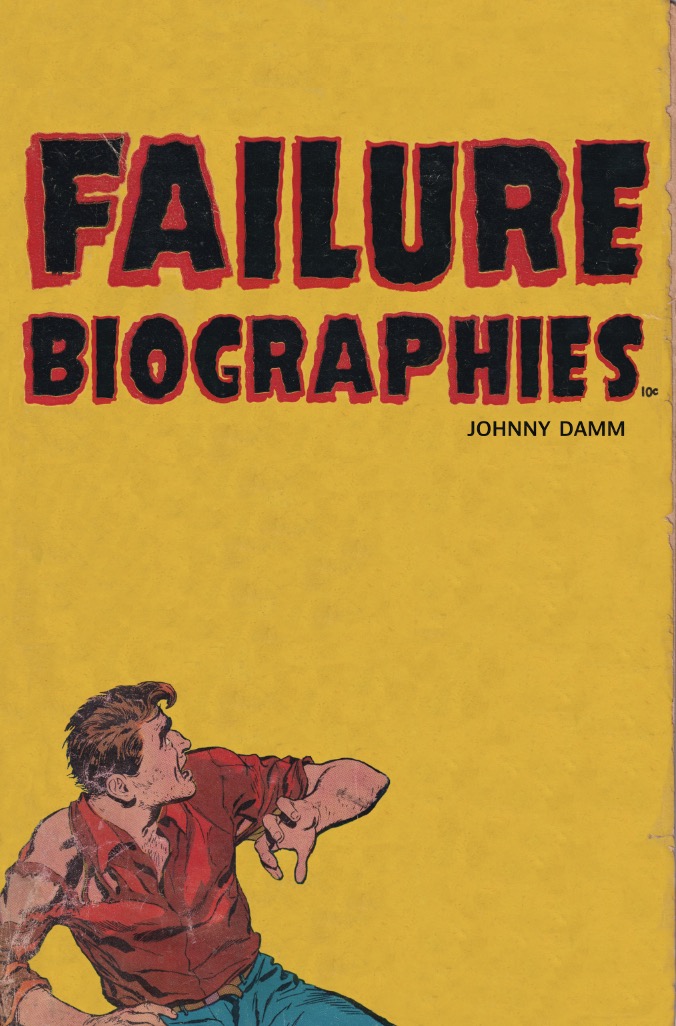
Failure Biographies
by Johnny Damn
(Operating System)
Damn’s innovative work is smart, poetic, witty, and, without a doubt, humorous. His graphic approach to artistic failure stylistically rings of the work of Donald Barthelme visually and textually, though with a philosophy of Becketian “fail better” no doubt guiding the project. Damn’s books always leave me saying, “damn” as it were, and this is one of his best. Failure Biographies was part of my research into visual poetics and book design in 2022.
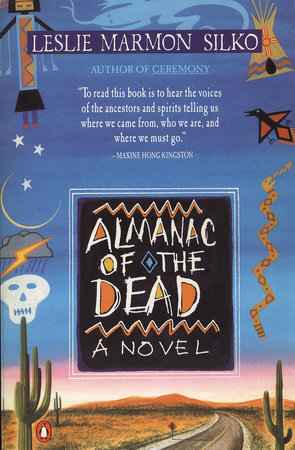
Almanac of the Dead
by Leslie Marmon Silko
(Penguin)
Silko’s novel is the definitive narrative about southern Arizona history, layered with Indigenous stories of stolen land. The last few years I have been returning to books about southern Arizona, especially Tucson—close to where I grew up. This return to the Almanac of the Dead after reading it over a decade prior brought me back to Congress Avenue, with a seat at the Hotel Congress, even petting the ostrich petting zoo near Picacho Peak. Silko’s work also digs deep into settler colonial histories and the shared resistance to it via Indigenous mythological cosmovisions of the Americas.

Christ Versus Arizona
by Camilo José Cela
(Dalkey Archive Press)
I took over a decade to finally come back and finish Cela’s novel Christ Versus Arizona. Cela traveled around southern Arizona a year or two before winning the Nobel Prize for Literature in 1989, and, maybe, passed through my hometown of Safford, where I hope he hit up the Golden Corral. Christ Versus Arizona is difficult to follow, written in two long sentences, with repeating narrative fragments recurring. This was one of the only novels I knew of that mentioned my hometown, replaying again and again a fire in the Safford jail where some folks escaped.
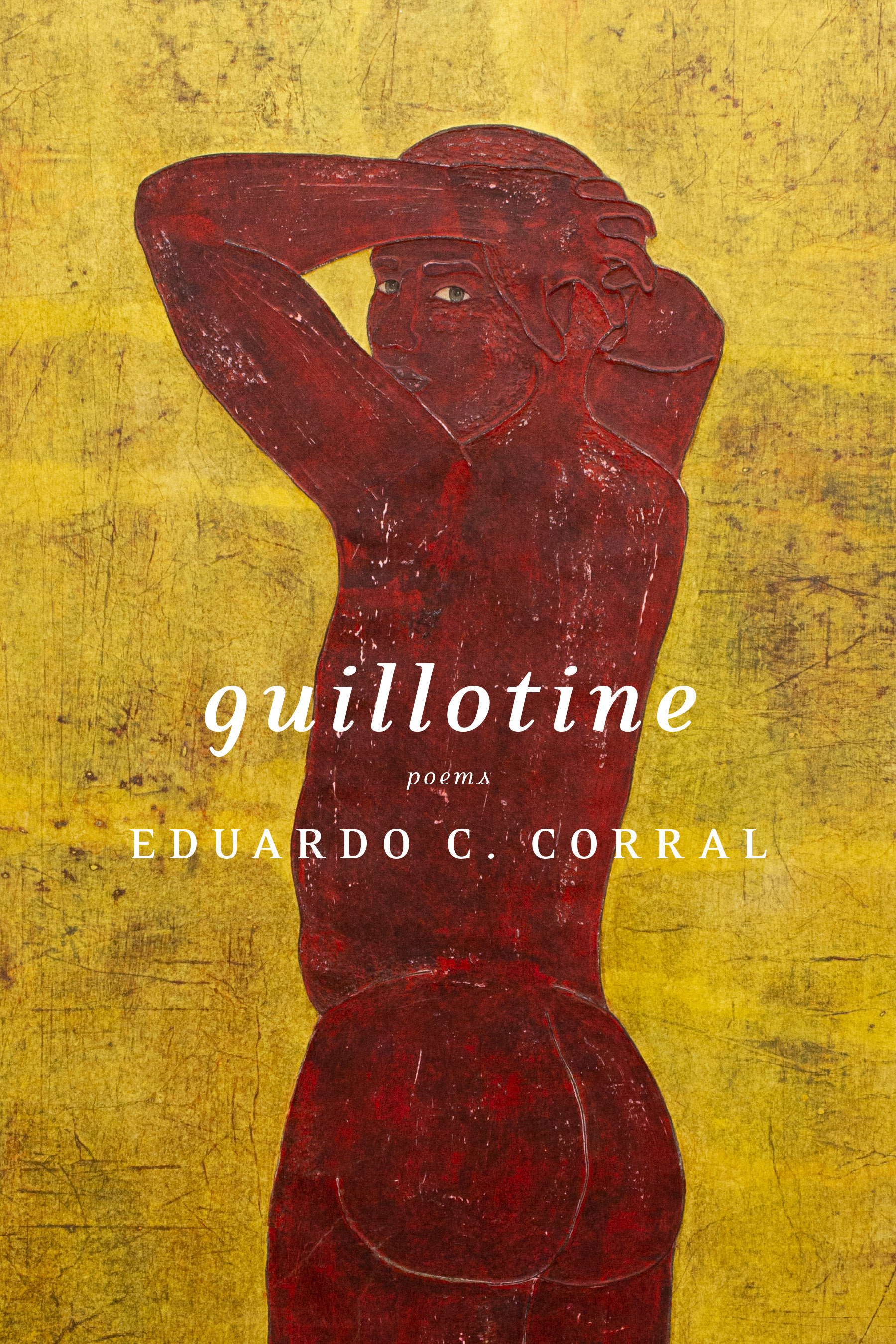
Guillotine
by Eduardo C. Corral
(Graywolf )
To end this Arizona tribute, I offer the pride and joy of the Grand Canyon State, Corral, born and raised in Casa Grande just south of Phoenix. Corral’s Guillotine examines the brutality of migration in southern Arizona against the Sonoran desert landscape that exists before borders, and after all borders will disappear. The people who journey the “devil’s highway” loom large in this collection, as do Arizona borderland towns Casa Grande, and nearby Tucson and Tubac. These are among the oldest cities in the nation, and the history of peoples, conquests, wars, and ecologies are quite rich, and also geologically epic in scope, as social backdrop for Corral’s lyrical borderlands poetics. Corral’s book was the favorite among those I taught in a graduate American Poetry course during 2022.
—Steven Alvarez, author of the novels in verse McTlán, Manhatitlán, and The Codex Mojaodicus

Unknown Language
by Hildegard von Bingen & Huw Lemmey
with Bhanu Kapil & Alice Spawls
(Ignora Books)
Medieval Abbess Hildegard von Bingen speaks from her distant time into the most radically distant of futures in this consortium of crystalline languages which can be called nothing so common as a book. Seriously; I don’t know what this is, but the act of reading it was a deep and rare pleasure. Plus I’m a general fan of the genre “female mystics of the medieval world,” so it ticked a lot of boxes for me.
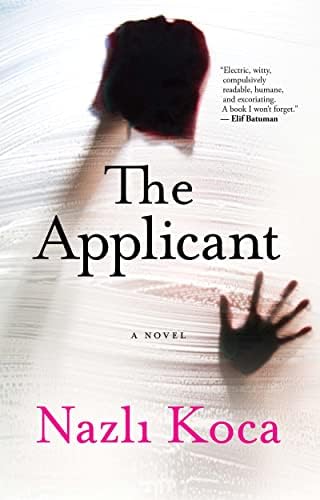
The Applicant
by Nazli Koca
(Grove Press)
The story of Leyla, a Turkish student in Berlin, who faces expulsion from her university, deportation from the country and possible imprisonment in her homeland if she lives the intellectually radical life she believes in. Tender and unsparing, this one uses its constellation of social issues to build a portrait of the artist that speaks to all of our shared present tense.

White Wedding
by Kathleen J. Woods
(FC2)
I’m biased on this one because I was an early reader and eventually had the honor of becoming its publisher, but I’ve honestly never read anything quite like this grody little blood clot of a book. Story of O meets The Stepford Wives as an uninvited guest makes a bland suburban wedding more memorable than anyone wanted it to be. Really just a great read.

Emergency: A Pastoral
by Daisy Hildyard
(Astra House)
The term pastoral generally calls to mind a countryside tamed out of all but incidental wildness, but in this book the small ferocious world of the Yorkshire downs is butted up against the small ferocious world of the young girl growing up in its rural poverty and it all seems very wild, indeed. A keenly observed book of naturalism, the novel is about a place, an era and the tenuous epoch of childhood which are all as fragile and fleeting as they are eternal in symbol and memory. I loved this book. When I finished it, I started over at the beginning.
—Sarah Blackman, author of Hex and Publisher at FC2

Last of Her Name
by Mimi Lok
(Kaya Press)
Mimi Lok’s collection from my publishing friends at Kaya Press stuck with me long after I finished reading. The stories span generations and continents, and according to Dave Eggers’ blurb, the last story—a fifty-five pager about an elderly woman who chooses to be unhoused in Hong Kong rather than be put in assisted living—“has to be considered a new classic.” The winner of the 2020 PEN/Robert W. Bingham Prize for debut short story collection, “Last of Her Name” is a great example of the lasting power of small presses.

Life Ceremony
by Sayaka Murata
(Grove Atlantic)
Published by Grove Atlantic, the granddaddy of indie houses, the new collection by Sayata Murata, the author of the international hit novel Convenience Store Woman, is absolutely bonkers. These quirky, disaffected characters think they’re aliens or or eat nothing but frozen foods or, in the collection’s title story, feast on the dead to celebrate their lives. Be ready to go with it.
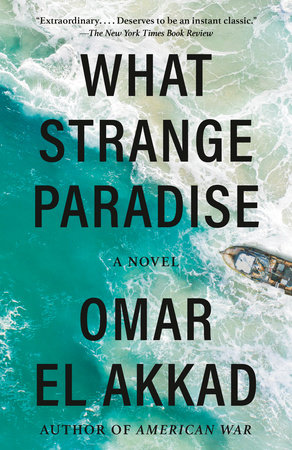
What Strange Paradise
by Omar El Akkad
(Penguin Random House)
There have been great books about migration from big publishers in recent years. Mohsin Hamid’s Exit West comes to mind. Omar El Akkad, whose stellar debut novel American War was also grim and topical, has a gift for being able to fable-lize the anxieties of our times. On a fictional island that sure seems Greek or Turkish, drowned migrants from the Middle East wash ashore. But a boy survives and escapes into the community. You may or may not believe what happens next.

Winter in Sokcho
by Elisa Shua Dusapin
(Open Letter Books)
Translated lit is my jam, particularly in these late-COVID times, when traveling abroad costs more and still requires a lot of accommodation and consideration. Winner of numerous awards including the National Book Award for Translated Literature, Winter in Sokcho—that’s Sokcho, South Korea, near the North Korean border—helped assuage some of my wanderlust. Originally authored in French, this short novel is about a French Korean guesthouse worker who develops an unusual relationship with one of the guests, a French graphic artist.

You Are Eating An Orange. You Are Naked
by Sheung-King
(Book*hug Press)
Full disclosure: I tried to acquire this short novel for my press, 7.13 Books. In manuscript form, I was immediately grabbed by the spare, witty prose and the Wong Kar-Wai of it all. So when I saw it at AWP 2022 at the table of the Canadian indie house Book*hug Press, I had to buy it. Winner of a couple of Canadian book awards, the final version does not disappoint. You heard it here first (perhaps): Sheung-King is going to be a star.
—Leland Cheuk, author of No Good Very Bad Asian and Publisher of 7.13 Books
As a good midwestern boy, I’m working on a western for my next novel. As a good Muslim boy, I’m writing about a Muslim character: a real-life camel wrangler for the US Army’s short-lived, pre-Civil War era camel corps—an Arab man named Hi Jolly née Hadji Ali. Fortunately, the past few years have seen publishers both large and small embrace alternate tales of the American West, and this has allowed me to draw inspiration from sources other than Cormac McCarthy novels.

One such book was Tom Lin’s The Thousand Crimes of Ming Tsu (Little Brown). Tsu is an assassin and laborer forced to work the rails like many of his compatriots of Chinese descent in 19th century America. There are elements of the familiar in the novel—a travelling circus with mystical freaks, a revenge plot, a blind prophet—but Lin is conscious of and conscientious with these tropes and surprises with his resolutions to conventional-seeming elements.

A novel that isn’t a McCarthy-esque western but feels like it could be is Gold Dust by the prolific Libyan novelist Ibrahim al-Koni (American University in Cairo). Gold Dust is set among the Tuareg in the Sahara and nominally is the story about a man and his camel as they flee from tribal and colonial hostility. I will not pretend to understand all the metaphor and symbolism embedded in the book, much of which derives from Sufi as well as pre-Islamic traditions, but I was nevertheless able to appreciate it as a tale of survival in the endless expanse of an unknowable desert.

Hi Jolly is buried beneath an eight-foot tall pyramid in the town of Quartzsite, AZ, and sadly there are no interviews of the man despite his regional fame in the late 1800s. There are, however, several second-hand accounts by those who knew him, including a boy who had brought Jolly meals and eventually discovered him dead in his cabin in 1902. That boy, Fred Kuehn, became the town constable and spoke with writer Harriett Farnsworth for her 1968 collection Pioneers of the Western Frontier (Naylor). While the interview was invaluable in helping me learn more about the “hero of the camel trails,” Farnsworth’s other subjects, which include the first Hollywood cowboy William S. Hart and 100-year-old “lady miner” Viola Mae Rush, animated the Old West and provided me insight into those who made it what it was.

One of my favorites outside of Westerns was Nina Shope’s Asylum, which won the Dzanc Prize for Fiction. Asylum is historical fiction in a loose sense—it’s based on the unruly relationship between the 19th century French neurologist Jean-Martin Charcot and his most famous patient, the “hysteric” Augustine. The novel is claustrophobic, with a sustained ferocity that reminds you of what literature can be and can do.
—Farooq Ahmed, author of Kansastan

The Animals in That Country
by Laura Jean McKay
(Scribe)
One of the best books I’ve read this year and it’s crazy to think that it would have slithered right under my radar if I hadn’t happened across a blogger’s review of it when I was reaching out to them to pitch a client’s book. It’s set in a zoo at the onset of a highly transmittable virus that quickly escalates to pandemic status. Not long after the initial flu-like symptoms wear off, the infected begin communicating with animals. What’s contained within these pages is a hallucinatory and heart wrenching journey to reclaim family and maintain humanhood in a world in which the animals now appear to have the upper hand.

Desert Creatures
by Kay Chronister
(Erewhon Books)
This book was a brain bomb of post apocalyptic dystopian western religious fanaticism (yes, I’m aware that’s a mouthful). Told in three parts, we follow a young girl named Magdala over the span of many years, beginning when she first convinces her father to allow her to make the pilgrimage to the holy city in an attempt to cure her clubfoot, through all of her trials and tribulations, to all the weird and wonderous people and places she encounters. It’s deliciously dark and bleak and eerie and was just what the doctor ordered!

River Woman, River Demon
by Jennifer Givhan
(Blackstone Publishing)
One evening, Eva—a Chicana bruja and curandera—awakens on the couch to the sound of her husband Jericho moaning for help down by the river behind their home, and upon reaching its muddy bank, she finds him clutching the dead body of their best friend Cecelia. She searches for the truth through unusual means, calling upon the ghosts of the drowned women who haunt her and leveraging her ancestral magick skills to keep herself and her family safe. A gorgeously written novel that mixes the magical with the paranormal, River Women, River Demon is a haunting look at the power of our pasts and the achingly familiar desire to not lose faith when all the evidence screams otherwise.

Tinfoil Butterfly
by Rachel Eve Moulton
(MCD Books)
I INHALED this book … and surprisingly … it didn’t go to the places I thought it was going to. It’s creepy, and unsettling, and never lets you get completely comfortable. It’s a story about how much you have to lose of yourself before you realize it’s time to find yourself again and the hell you have to go through to get there. The less you know going in, the better … trust me!

Tender Is the Flesh
by Augustina Bazterrica
(Simon & Schuster)
Tender is the Flesh is set in a dystopian world where animals catch a virus that makes them completely inedible. An incredibly disturbing twist on our capacity to overlook what was once unethical in order to maintain standards of normalcy. It’s a horrifying concept—eating meat we know is human—but also one that doesn’t shock me. How often do we picture the face of the cow or chicken or pig that lost its life to nourish us? How often do we think about the life it lived, the torment it endured, all to fill our stomachs? How long, then, do you think we would worry over the “special meat” that now graces our plates?
—Lori Hettler, founder of The Next Best Book Club and freelance publicist at TNBBC Publicity

Serving the Shadow, an alien hunter lives in pursuit of their next bounty; but we see so much life amid the flailing of this violent scene. Written in an experimental form by Ali Raz that recalls web comics and House of Leaves, Alien (11:11 Press) is a curious expo of storytelling mayhem. I am so enamored with this book and can’t wait to see what Raz dazzles us with next.

I jumped back in time for this recommendation, reminded of Brian Evenson’s post that highlighted the dangerous animal that is João Gilberto Noll’s Atlantic Hotel (Two Lines). An immense, probing odyssey of identity and deception, packaged into one of my favorite book forms, the short novel. Noll has many more translated titles which I’ll be investigating in the new year.

It may not be everyone’s cup of tea, but the drudgery of work is made fun again by Magnus Mills’ The Restraint of Beasts (Arcade Publishing). I am reminded to explore far and wide for comic deadpan to suit my Midwest disposition, least of all the UK, in this English novel about the forced exile and fascist regimen of high-tension fence-builders. Next up is All Quiet on the Orient Express, perhaps charting my post-New Year’s tumble through Mills’ oeuvre.
—Jason Teal, author of We Were Called Specimens
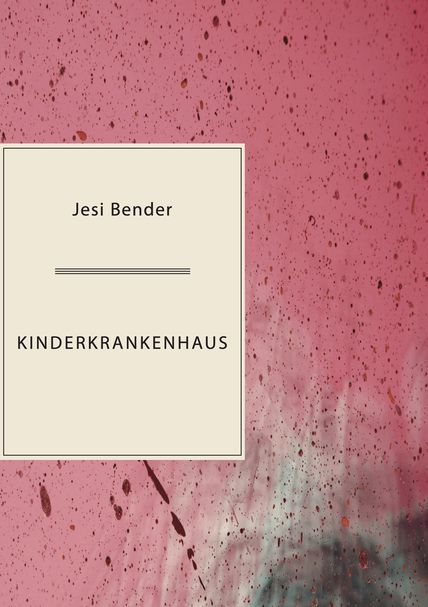
Kinderkrankenhaus
by Jesi Bender
(Sagging Meniscus)
In Jesi Bender’s hybrid play, children housed within a gray hospital question, mourn, reject, and experiment with the words their doctors and parents have applied to them. As the limitations and irrationality of these labels become more evident to the children and the reader, so does the language reveal a society that favors boundaries over innocence.

Beasts of a Little Land
by Juhea Kim
(Harper Collins)
Juhea Kim’s debut novel opens in 1917, in the mountains of occupied Korea where a starving local hunter and a legendary tiger circle each other in the swirling blizzard darkness. When a young Japanese officer stumbles into the hunt, the encounter unfolds a story with a young courtesan that spans half a century.

Moon Witch, Spider King
by Marlon James
(Penguin Random House)
Marlon James’ Dark Star trilogy continues from the point of view of Sogolon, the Moon Witch who fights, searches, and rages across a mythic African landscape for centuries. Sologon’s account, which actively defies interrogation, insists on revenge, a woman’s revenge, for oneself and countless generations.

Sift
by Alissa Hattman
(The 3rd Thing)
Alissa Hattman’s forthcoming novel-in-flashes, Sift, follows two women through the debris of environmental collapse as they search for fertile soil. As both drivers and passengers of broken vehicles and churning grief, the characters steadily nurture connections and discover new emotional landscapes amid desolate deserts, skeletal forests, and lush memories.
—Thea Prieto, author of From the Caves
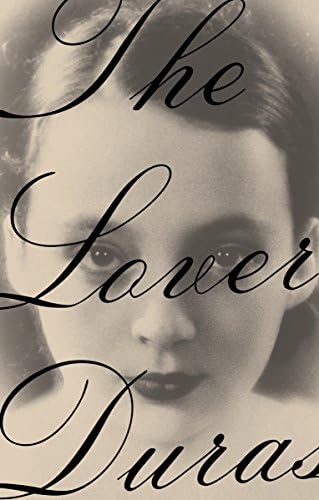
The Lover
by Marguerite Duras
(Penguin Random House)
It feels inaccurate calling this a “book.” For me, it is the struggle against falling over when standing in a strong wind.

Sonnets
by Bernadette Mayer
(Tender Buttons)
The Renaissance form finds its greatest 20th- and 21st-century advocate in the recently deceased Bernadette Mayer. Alongside Midwinter Day, perhaps her greatest achievement.

Modern Love
by Constance DeJong
(Primary Information)
The novel that gives collage the immediacy of the confessional.

Caw Caw Phony
by Michael Sikkema
(Trembling Pillow)
This is my favorite book of poetry of the year. Nature poetry for the 21st century, by way of Dada and the visual poetry of N.H. Pritchard.

Joe Brainard: The Art of the Personal
by John Yau
(Rizzoli)
There was a time when being an artist meant doing a bunch of different things. Yau educates and provokes us to be more like Joe.
—William Lessard, author of instrument for distributed empathy monetization
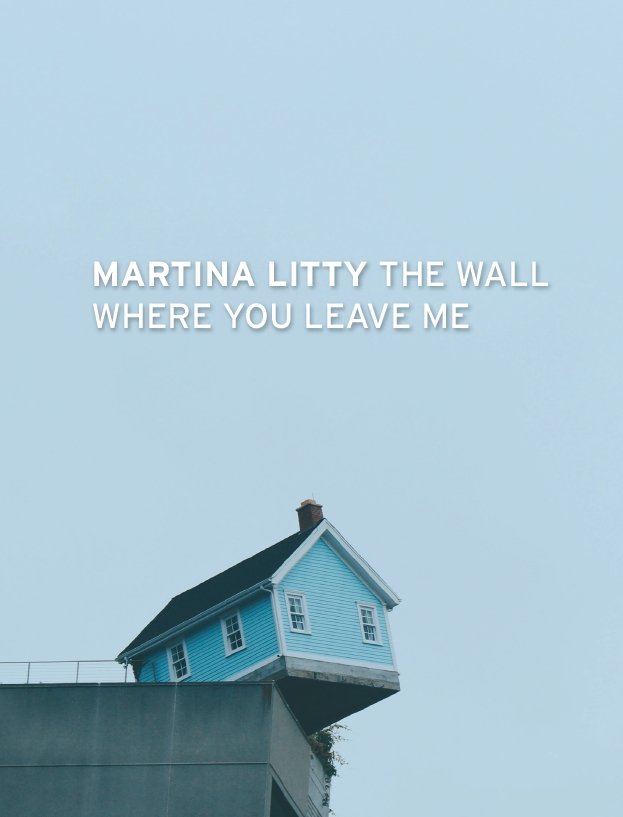
The Wall Where You Leave Me
by Martina Litty
(Bull City Press)
The INCH series consistently introduces me to my new favorite poets and this is no exception. An incredible micro-chapbook of 14 poems—one of taken with me everywhere this year.

The Alpinist Searches Lonely Places
by Kyle Vaughn
(Belle Point Press)
Kyle Vaughn’s got a sharp eye for image and reading this chapbook is truly experiencing the rural landscapes and seasons Kyle is writing from.
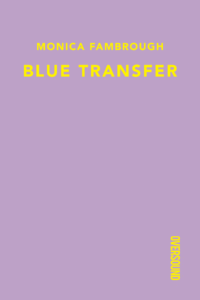
Blue Transfer
by Monica Fambrough
(Oversound)
I love the questions that inhabit the poems in this little book. Misdirection becomes its own valuable direction because it makes the mind get out of its own way and really consider possibility.

The Water Cycle
by Beth Gordon
(Variant Literature)
Beth Gordon is a magician. This chapbook of prose blocks is filled with the kind of lines I wish I’d written: “When you walk into the room love untangles its song.”

inside inside inside
by Jo Ianni
(Apt. 9 Press)
As an object this press makes immaculate works of art. Jo’s poems inside it are brief moments that again and again demand I audit my own recklessness of language. Jo can pull out all the sounds of the words I use every day but have stopped listening to.

The Gleaming of the Blade
by Christian J. Collier
(Bull City Press)
Simply phenomenal. I can’t wait for Christian’s full-length collection because this chapbook wreaked all kinds of havoc with the American South as the steady backdrop.
—C.T. Salazar, author of Headless John the Baptist Hitchhiking

Be Here to Love Me at the End of the World
by Sasha Fletcher
(Melville House)
Trying to find the right words to describe Sasha Fletcher’s novel isn’t easy, because part of what this novel does beautifully is a kind of sustained tone that’s simultaneously elegiac and ecstatic. On paper, the juxtaposition of intimacy and the likelihood of the apocalyptic could look like, I don’t know, Martin Amis’ London Fields (a novel I love), but this is light-years away from that novel, tonally speaking. It’s basically a high-wire juggling act that’s simultaneously the most heartbreaking concert you’ve ever heard, and I’ll be damned if Fletcher doesn’t pull it off.

Linea Nigra
by Jazmina Barrera
(Two Lines)
This memoir is a different kind of dizzying; here, the experience of living in the author’s body finds itself juxtaposed with ages-old questions about the gulf between the aesthetic and the visceral. It’s a haunted, haunting, thought-provoking literary work, and if there’s any justice in the world, it’ll not only find an audience but inspire future writers to create work as intriguing and challenging as this book.
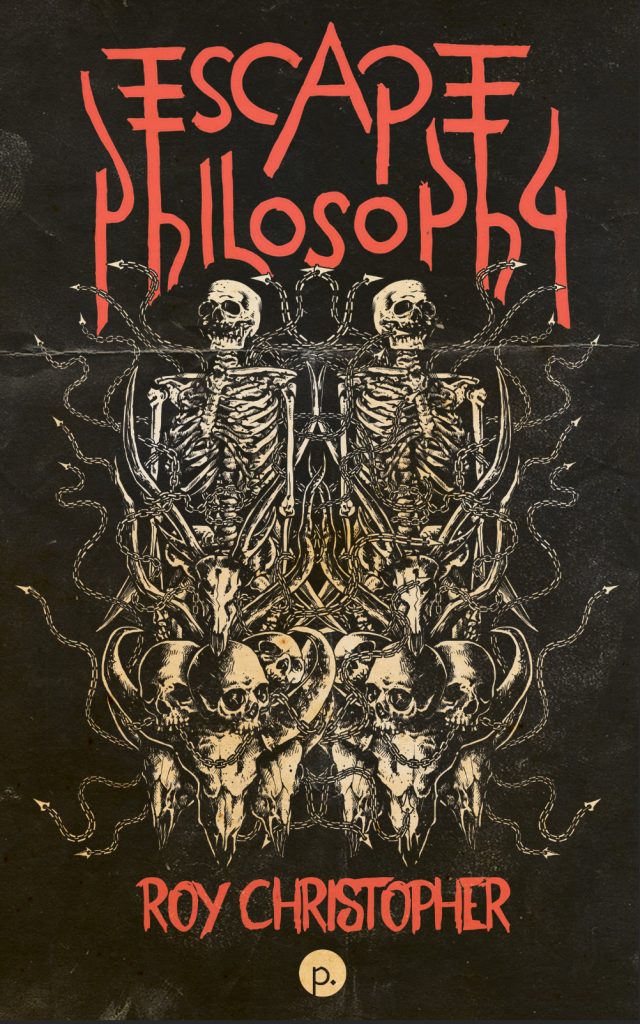
Escape Philosophy
by Roy Christopher
(Punctum Books)
Does the band Godflesh explain the current human condition? Before reading Escape Philosophy, I’d have been skeptical of this idea; now, I think I’m thoroughly on board. Christopher invokes the work of a number of artists who blend the transgressive and the transcendental (the aforementioned Godflesh, David Cronenberg, and dälek, among many others) and arrives at a new way of viewing the present moment.
—Tobias Carroll is the author of four books, most recently the novel Ex-Members

The English Understand Wool
by Helen DeWitt
(New Directions)
I have been waiting for DeWitt to skewer the industry that notoriously did her dirty, and she delivers with delectable concision and twists the sword deep into the guts of capitalist big publishers in this short farce of word-for-word brilliance.

Gut Text
by Mike Corraro
(11:11 Press)
I was late to discover Gut Text, but I’m old and busy and generally okay with a better-late-than-never take on literary parties. I share it with you now in case you’re even older or even busier, but please do not ignore this work of hugely gratifying linguistic fireworks that refuses to settle itself into the ordinary.

Houses of Ravicka
by Renee Gladman
(Dorothy Project)
Doubling as the fourth book in Gladman’s Ravicka series as well as a reflection on the series, the grey-turtlenecked philosophy student sister of the climate crisis genre takes a turn to lush dreamscape.
—Miette Gillette, Publisher, Whiskey Tit

Paradise Redux
by William Cody Watson
(self-published)
Pulling the zipper on the thinning membrane between genius and psychosis emerges a new genre: chaos fiction. Uncomfortably familiar, like the memory of a dream that changes slightly when remembered, but with death-like intensity as every manic thought races to be included lest all be forgotten when taking the next breath. Everything is chaos/chaos is everything in the unholy war womb of William Watson’s (Snatch Wylden)’s Paradise.

Monarch
by Candice Wuehle
(Soft Skull)
Beauty pageants, 90s nostalgia, queer coming-of-age, brainwashing, murder. Candice Wuehle is one of the most gifted writers of our time.

POLO
by Jinnwoo
(Expat Press)
A novella so raw, real, and vulnerable, you will relive the absolute thrill and terror of your youth.

Musos
by Charlene Elsby
(Merigold Independent)
Sartre says hell is other people, Wittgenstein says it’s yourself. In Musos, Charlene Elsby confronts something more terrifying: we desire the hell in others.

The New House
by David Leo Rice
(Whiskey Tit)
A dark and thrilling meditation on mysticism, religion, and art. This isn’t mere brilliance, it’s genius.
—Andrew J. Wilt, author of Age of Agility and Publisher at 11:11 Press
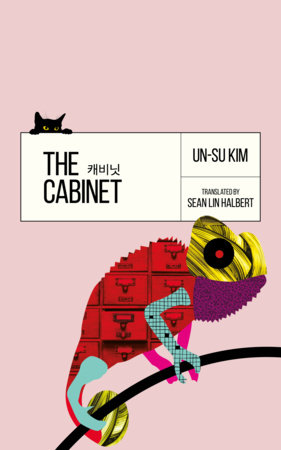
The Cabinet
by Un-Su Kim
(Penguin Random House)
This book has everything: A man with a Gingko tree growing out of his body, soul-crushing bureaucratic office culture, a massive mood swing from surrealist vignettes into a suspense/thriller, another person whose tongue is slowly being eaten by the lizard living in her mouth. I really enjoy every odd choice he made here. Strange little funride of a book.

Jerks
by Sarah Lippman
(Mason Jar Press)
Hot take: Sometimes, it’s very healthy for writers to see things that make them say, “Man, she’s so much better at this than I am.” This is not me being self-effacing—it’s actually the opposite. I think I’m pretty good, so if she’s better than me, it’s a testament to her greatness rather than a commentary on my failings. In all seriousness, this collection really feels like it was written just for me. Someday I hope to steal from a story as good as “Let All Restless Creatures Go.”

The Other Ones
by Dave Housley
(Alan Squire Publishing)
Grade A premise (interspersing the lives of those who won an office lottery pool with those who didn’t participate) combined with the kind of sharp, observational humor that cuts glass. There’s a scene where one of the characters breaks down his living expenses and measures that against his retirement savings, and I think about that scene way more than any healthy person should. This is a fantastic book.

Man in a Cage
by Patrick Nevins
(Malarkey Books)
Something I admire greatly is when people “fully commit to the bit” (Dave Housley is also very good at this), and in Man in a Cage, Patrick Nevins gives us a book about an American naturalist (occupation), written very much like an American naturalist (literary movement) novel. It honestly feels like some newly discovered novel that was written in the 1890s, and I think he’s able to show the evils of cultural and religious hegemony just by giving us what the narrator sees and believes.
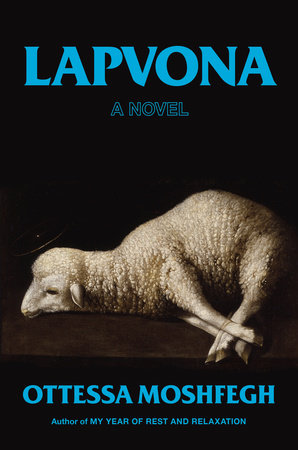
Lapvona
by Ottesa Moshfegh
(Penguin Random House)
Look, I think people have said everything there is about this book—and to be completely honest, I found all the handwringing over it comically tedious. I really enjoyed it.
—Jeff Chon, author of Hashtag Good Guy with a Gun and This Is the Afterlife and Books Editor at Heavy Feather Review
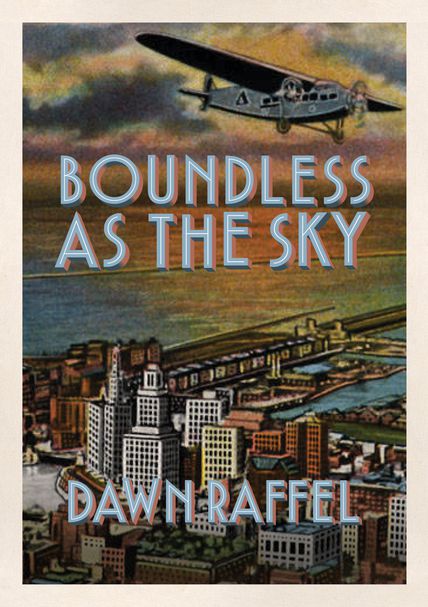
The best book I read in 2022 doesn’t come out until 2023. Dawn Raffel’s Boundless as the Sky (Sagging Meniscus) has everything I love; lyrical language, hybridity, history, heartbreak, and effusive imagination. This book is a collection of short stories and a novella that all center around General Balbo’s historic flight to Chicago in 1933. Through different perspectives of the people participating in this event, Raffel has created a work that is at once specific and universal, and, all at once, incredibly beautiful.

I picked up Search History by Eugene Lim (Coffee House) when it won the 2021 Big Other Book Award for Fiction. This book is at once incredibly intelligent and deeply moving and yet it still manages to be funny. It quickly became one of my favorite novels of all time.

The Great Indoorsman by Andrew Farkas (University of Nebraska) is a series of essays about indoor spaces. Equal parts humor and smarts, Farkas is able to make the mundane uniquely terrifying and/or philosophical. I wrote a more in-depth review on it for North American Review if you’re interested.

Speaking of philosophy, I really enjoyed Jean Baudrillard’s Fragments (Verso). A stream-of-conscious collection of Baudrillard’s thoughts, reading it is like talking to your grandfather, who also happens to be a genius. Screens/machines, the art market, AIDS; he touches on everything and every “fragment” is thought-provoking.
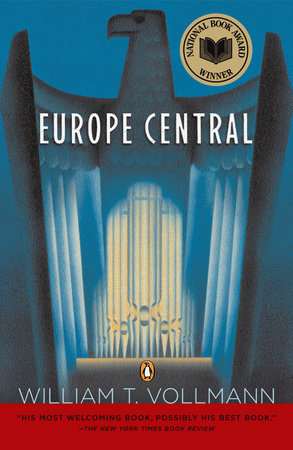
I read my first Vollmann this year, Europe Central (Penguin), and it was an amazing introduction to his work. When I get depressed about mainstream markets, books like this pop up and remind me that language and lyricism can still be recognized and appreciated by larger audiences. Beautiful phrasing, complex characters and structure, uncovered histories.
—Jesi Bender, author of Dangerous Women and Kinderkrankenhaus, list-master, and publisher of KERNPUNKT Press
Jesi Bender is an artist from Upstate New York. She is the author of Dangerous Women (dancing girl), Kinderkrankenhaus (Sagging Meniscus), and The Book of the Last Word (Whiskey Tit). Her shorter writing has appeared in FENCE, Vol. 1 Brooklyn, Split Lip, and others.
Check out HFR’s book catalog, publicity list, submission manager, and buy merch from our Spring store. Follow us on Instagram and YouTube. Disclosure: HFR is an affiliate of Bookshop.org and we will earn a commission if you click through and make a purchase. Sales from Bookshop.org help support independent bookstores and small presses.

